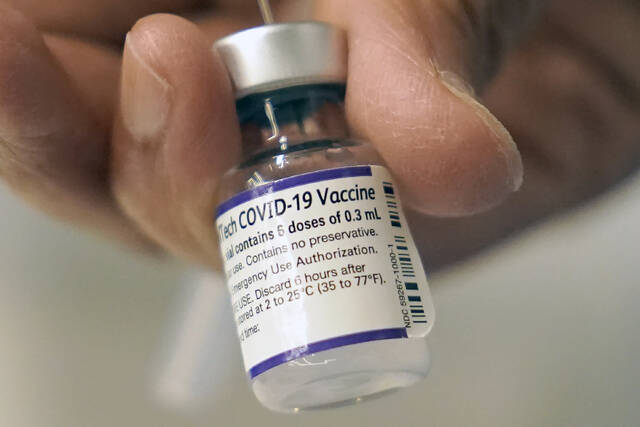Pa. officials address concerns about vaccination data
State health officials on Thursday said there should not be concern over the veracity of federal data they used to tout the state’s covid-19 vaccination rate among adults as 95%.
In a release from Gov. Tom Wolf’s office Wednesday, officials celebrated the milestone that a spokesperson said was based on the Centers for Disease Control and Prevention’s vaccine data tracker.
Some experts have raised concerns about the accuracy of the CDC’s data tracker, noting for months that the federal data did not line up with national surveys and state data.
“The CDC data is the only resource that pulls together all available information to represent Pennsylvania as a whole – utilizing the (Department of Health’s) vaccine jurisdiction, Philadelphia County Department of Public Health’s vaccine jurisdiction and other residents vaccinated out of state,” said spokeswoman Maggi Barton.
Dr. Howard Forman, a professor of public health at Yale University School of Medicine, questioned the federal data in an interview late last year with Kaiser Health News. He pointed to CDC data that showed 99.9% of Americans 65 and older received at least one vaccine dose, something that didn’t line up with myriad polls, surveys and some states’ own data.
Barton noted that the KHN piece was published prior to a concerted data clean-up effort undertaken by the CDC in late December.
“At the end of 2021, the Department of Health worked closely with the Centers for Disease Control and Prevention to update and reflect the data integrity work done by the department on vaccinations,” she said.
Since then, the CDC has added a footnote capping all vaccine data estimates at 95% to help “address potential overestimates of vaccination coverage due to first, second and booster doses that were not linked.”
Other experts told U.S. News and World Report that the CDC’s footnote capping estimates at 95% doesn’t do enough to solve the underlying data issues.
“We need to know where our vulnerable populations are,” said William Moss, the executive director of the International Vaccine Access Center at the Johns Hopkins Bloomberg School of Public Health. “We need to know where to divert resources. … With variations in data at the state level, it’s just very hard to do all that at the federal level or at the national level.”
Moss told the outlet that data reporting problems at the state level have plagued efforts to track numbers since the pandemic’s start, beginning with testing data and case counts.
The KHN report noted that getting accurate information regarding vaccination data is inherently difficult: federal and state officials might use different population estimates, states might not account for residents who are vaccinated in other states or those vaccinated in federal settings like prisons or clinics managed by the Veterans Health Administration of Indian Health Service.
The state Department of Health’s own vaccine data dashboard makes it difficult to determine that kind of age range because of the way it breaks down vaccinations by age, with 18- and 19-year-olds lumped with the 15-19 age group. Similarly, age breakdowns for older adults are broken into far narrower categories than the standard 65-and-up.
It does note, in some breakdowns, that overall Pennsylvania data does not include out-of-state residents or data from the Philadelphia Department of Public Health, as Philadelphia’s vaccination efforts are overseen locally as opposed to by the state.
“The Department of Health continues to ensure the vaccination data within our 66-county jurisdiction is reviewed regularly to ensure duplicate vaccination records are removed and dose classification is correct – (that is), first, second and booster doses,” Barton said.
Remove the ads from your TribLIVE reading experience but still support the journalists who create the content with TribLIVE Ad-Free.

